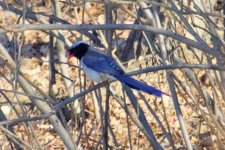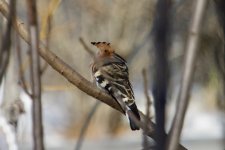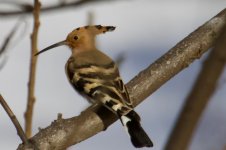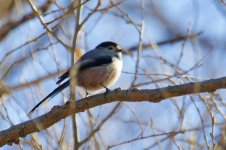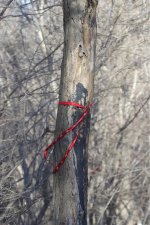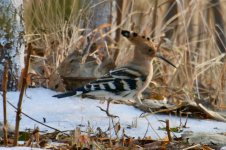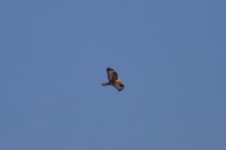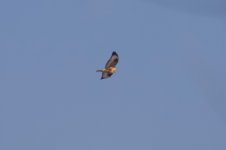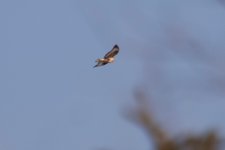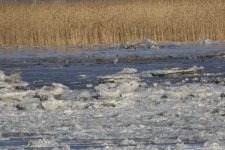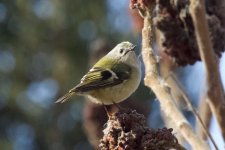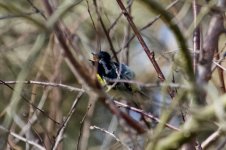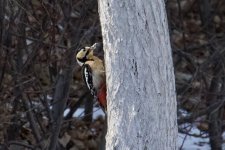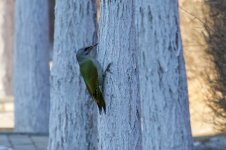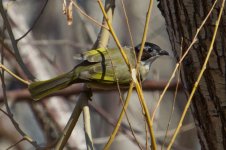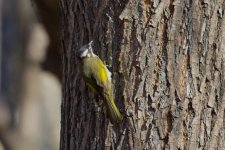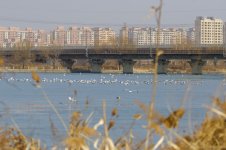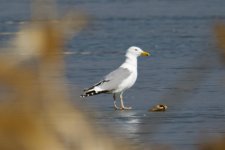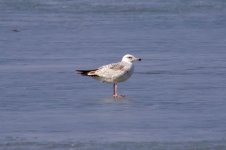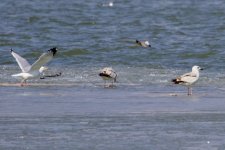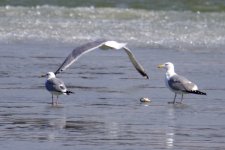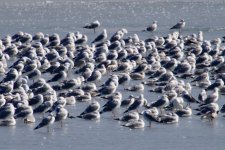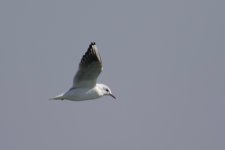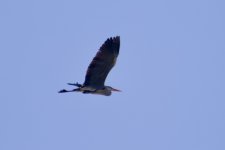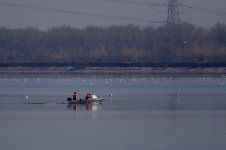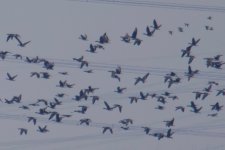Owen Krout
Well-known member

Dec-19
Seeing a clear blue sky and no wind this morning, I started out intending to check out the Lao River by Yingkou again. However, after seeing that the south bound buses were all packed I decided instead to just check out a local patch.
That worked out well as I hadn't checked on my Red-Billed Blue Magpie recently and sure enough, all three were found almost immediately. The Azure-Winged Magpie are starting to accept their presence as today there were only about 15 of them quietly following the RBBM about. They were basically just keeping an eye on them and I got the impression that they wanted the RBBM to know they were under observation.
Two Grey-Headed Woodpecker and two Sreat Spotted Woodpecker were in the area with the AWM occasionally chasing them into flight.
Three Hoopoe were scratching in the leaf litter and popped up to nearby trees to check me out.
A couple of Olive-Backed Pipit were also rummaging through the leaf litter and nearby were about 10Japanese Tit and 5 Long-Tailed Tit.
I almost forgot and had to edit it in, but does anybody know what the significance is of the trees tagged with red ribbons? Sometimes with a bow and sometimes like this one. I have seen a few, like this one, where the same tree has the ribbon renewed regularly. This one has been tagged like this for at least four years now.
Seeing a clear blue sky and no wind this morning, I started out intending to check out the Lao River by Yingkou again. However, after seeing that the south bound buses were all packed I decided instead to just check out a local patch.
That worked out well as I hadn't checked on my Red-Billed Blue Magpie recently and sure enough, all three were found almost immediately. The Azure-Winged Magpie are starting to accept their presence as today there were only about 15 of them quietly following the RBBM about. They were basically just keeping an eye on them and I got the impression that they wanted the RBBM to know they were under observation.
Two Grey-Headed Woodpecker and two Sreat Spotted Woodpecker were in the area with the AWM occasionally chasing them into flight.
Three Hoopoe were scratching in the leaf litter and popped up to nearby trees to check me out.
A couple of Olive-Backed Pipit were also rummaging through the leaf litter and nearby were about 10Japanese Tit and 5 Long-Tailed Tit.
I almost forgot and had to edit it in, but does anybody know what the significance is of the trees tagged with red ribbons? Sometimes with a bow and sometimes like this one. I have seen a few, like this one, where the same tree has the ribbon renewed regularly. This one has been tagged like this for at least four years now.
Attachments
Last edited:




